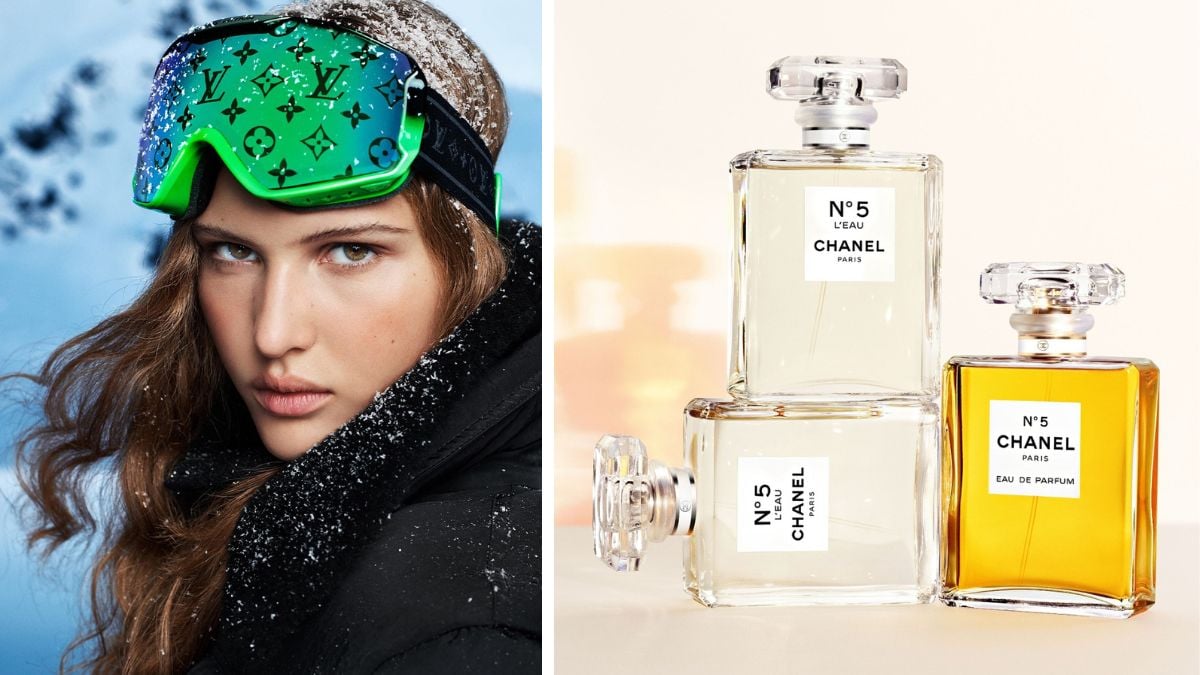
Luxury never goes out of style, but it does evolve. This is demonstrated by the BrandZ Most Valuable Global Brands 2025 ranking by the consultancy Kantar, which reveals the luxury houses with the highest brand value in the world. In a year marked by economic slowdown and changing consumer habits, the luxury sector showed a slight decline of 2% compared to 2024, yet continues to stand out for its solidity, exclusivity, and pricing power.
READ ALSO. What are the most valuable retail brands in the world in 2025, according to Kantar?
👜 Which brands lead luxury in 2025?
The Top 10 most valuable luxury brands according to Kantar are dominated by European houses with decades—or centuries—of history. These are the leaders:
| Rank | Brand | Brand Value 2025 (US$M) | Change vs 2024 |
|---|---|---|---|
| 1 | Louis Vuitton | $111,938 | −14% |
| 2 | Hermès | $109,421 | +17% |
| 3 | Chanel | $62,292 | +4% |
| 4 | Gucci | $15,329 | −35% |
| 5 | Cartier | $12,369 | +18% |
| 6 | Dior | $11,469 | +4% |
| 7 | Rolex | $9,720 | +7% |
| 8 | Tiffany & Co. | $5,916 | −5% |
| 9 | Prada | $5,654 | +10% |
| 10 | Fendi | $5,611 | N/A |
How have luxury brands transformed over the last 20 years?
According to Kantar, the category has grown an impressive 477% since 2006, driven by:
- Pricing power
- Emotional brand narratives that tell stories of heritage, craftsmanship, and exclusivity
- Expansion into new audiences and digital channels
Before the Great Recession of 2008, luxury brands targeted a very narrow elite audience. Today, those same brands have become aspirational symbols accessible to HENRYs (High Earners Not Rich Yet), thanks to celebrity collaborations, ecommerce, social media, and immersive experiences.
ALSO READ. What are the most valuable retail brands in the world in 2025, according to Kantar?
🌍 How does the Chinese market influence global luxury?
China remains a key driver of growth for many brands. For example, Hermès has consolidated its position as a timeless value brand by appealing to Chinese consumers who favor understated, non-ostentatious luxury—a preference that has become more relevant following government restrictions on public displays of wealth.
On the other hand, brands like Dior have successfully leveraged platforms like Weibo and Douyin (TikTok), along with collaborations with Asian celebrities to emotionally connect with younger audiences, helping it rise to 5th place in the luxury ranking.
💎 What factors drive brand value in the luxury sector?
According to Kantar, luxury brand growth and margins are primarily explained by two elements:
1. Meaningful Difference
It accounts for 46% of brand value growth. Brands perceived as unique and relevant can justify higher prices and build loyalty.
2. Ongoing exposure and memorable experiences
Modern luxury is built through multiple touchpoints: boutiques, social media, fashion shows, livestreams, and more. Integrated experiences create emotional connections over time.
📉 Why did Louis Vuitton’s brand value fall in 2025?
Although Louis Vuitton remains the most valuable luxury brand in the world, its value declined by 14% compared to 2024. This is partly due to a slowdown in VIP consumer spending, especially in China, and a lull in creative rotation that left some luxury houses on pause compared to more innovative competitors.
Nonetheless, the brand still dominates in global recognition and continues to lead in categories like handbags, footwear, and men’s fashion.
✨ Which luxury brand grew the most?
Cartier stands out as the fastest-growing brand in the sector, with an increase of 18% in 2025. Its timeless appeal and perception as a safe investment during economic uncertainty have boosted its value, particularly in high-end watches and jewelry.
🛍️ How have TikTok and resale platforms influenced luxury?
Social media—especially TikTok—has been crucial in repositioning brands like Prada, Miu Miu, and Hermès among younger consumers. Additionally, the rise of resale platforms has popularized a new value criterion: a brand’s ability to “hold its value” over time. This trend has increased demand for iconic items and legitimized luxury as an investment.
🧾 What lessons does the 2025 luxury ranking leave behind?
- Established brands remain the most valuable, but they must adapt to new formats and audiences to maintain relevance.
- Heritage, design, and craftsmanship continue to be key differentiators, now paired with digital intelligence and emotional storytelling.
- Asia is the new center of gravity for luxury, both in consumption volume and cultural influence.
- The luxury that wins today isn’t just the one that shines, but the one that connects and endures.









